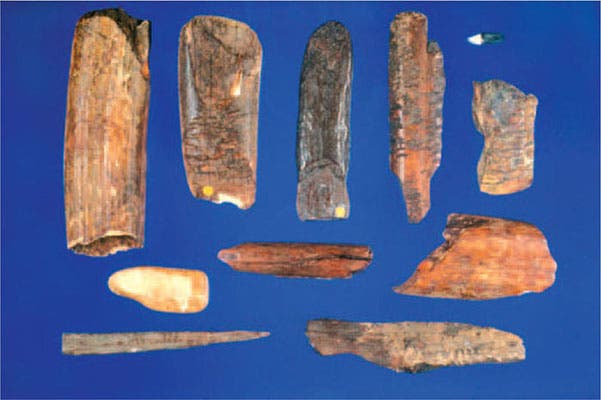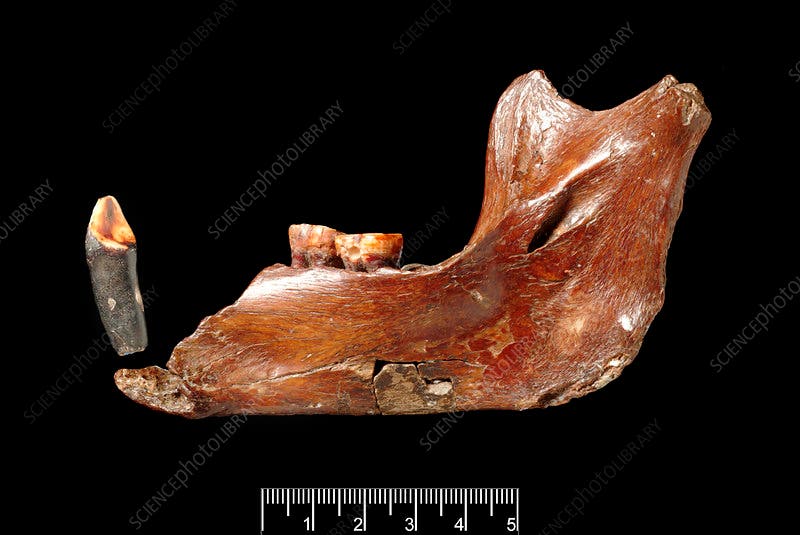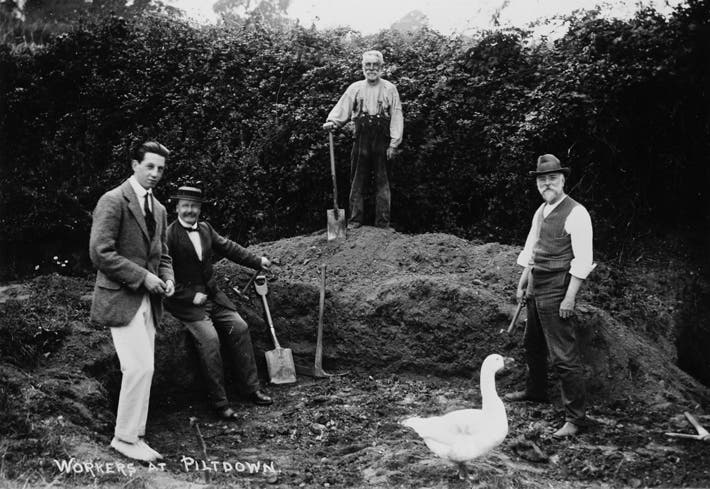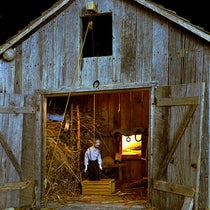Scientist of the Day - Martin Alister Hinton
Martin Alister Campbell Hinton, a British zoologist, was born June 29, 1883. Hinton spent most of his professional career at the Natural History Museum in London, where he retired as Keeper of the Department of Zoology in 1945. His specially was rodents, which he collected in large numbers, so that when they cleared out his rooms after his death, they found some 10,000 tobacco tins, many containing rodent specimens. He apparently never threw anything away.
Another thing he did not throw away was a trunk, which was found in a storage area above the Keeper's Office in 1978, 17 years after his death. Among other articles, it contained a number of mammal bones and tusks that had been carefully stained, with several different dyes. A few anthropologists found that quite interesting. For in 1953, several investigators, including Kenneth Oakley and Wilfrid Le Gros Clark, had carefully examined the bone fragments of Piltdown man, originally found in 1912, subjected them to a new test, called fluorine dating, and discovered that the old-looking, darkly colored bones were not old at all. The skull fragments, supposedly of Pleistocene age, were from a human who lived about 800 years ago, and the jaw was that of a recent orangutan (third image, below). The dark color was the result of applied dyes, intended to make young bones look ancient. Piltdown man was a fraud.
Even more interesting was the fact that Hinton, when a young intern at the Museum, had taken an active interest in the Piltdown excavations of 1912 and thereafter. He knew Charles Dawson, the amateur who discovered the bones, and Arthur Smith Woodward, the professional anthropologist who first described the finds (we displayed Woodward’s original paper of 1913 in our Blade and Bone exhibition some years ago). We even have a photo of Hinton, Dawson, and Woodward at the Piltdown quarry (fourth image, below). Hinton at the time applied for a paying position at the Museum, and Woodward refused to hire him, so Hinton had a grudge against Woodward. Was it possible that Hinton conspired, either alone or with Dawson, to concoct a fraudulent fossil human in order to embarrass Woodward?
Many people have been accused of perpetrating the Piltdown fraud. Dawson has always been the most obvious candidate – he found almost all the bones except the canine, and he had engaged in several other questionable alterations of historical material before Piltdown. Woodward himself was a possibility, as were two other London anthropologists, Grafton Elliott Smith and Arthur Keith. Arthur Conan Doyle lived only miles away from Piltdown and visited the site and has been considered a possible culprit. The French theologian Teilhard du Chardin also took part in the excavations (he found the canine), and he has been accused (by Stephen Jay Gould) of being the forger. And now there was Hinton's trunk with its damning evidence, to make the situation even juicier.
The case against Hinton was made in 1996 by two London researchers, and then again in more detail by one of them in 2003. It turned out that the bones in the trunk had been dyed with the same dyes as the Piltdown fragments. A separate collection of artificially stained human teeth was found by Hinton's executor, and they too were similar in appearance to the chocolate-brown Piltdown canine (fifth image, above). There was even a flat object in the trunk, carved from a tusk, that was similar to the notorious Piltdown "cricket-bat", one of the last objects found at Piltdown, carved from a mammoth tusk and resembling a modern cricket bat. The objects in the trunk might indeed have been the trial experiments of a forger out to fool the anthropological world.
But there was another possibility, not considered by the accusing scholars – Hinton might have been suspicious of the Piltdown finds at the time and may have conducted his own experiments to see if he could reproduce artificially the appearance of the Piltdown fragments. That now appears to have been the case.
In 2012, the Natural History Museum assembled a large team of experts to examine the Piltdown fragments using every tool available to modern analysis, and the results were published four years later, in 2016, by the Royal Society of London. The team was able to determine such things as that the jaw, canine, and a molar found later all came from a single orangutan individual who lived in Sarawak (although how the bones got to Piltdown remained unsolved). Most importantly, they concluded that there was a single forger involved, not a professional conservator but a skilled amateur, and that almost certainly was Dawson. Hinton was barely mentioned in the final report.
So Hinton would seem to be exonerated, and he ought to be (but has not been) praised for questioning the Piltdown finds so early, when the anthropological community was fully behind Woodward. His motives may have been less than honorable – to make Woodward look foolish – but his skepticism was still admirable. We hope he does not go back to being remembered solely for his 10,000 bone-filled tobacco tins.
Dr. William B. Ashworth, Jr., Consultant for the History of Science, Linda Hall Library and Associate Professor emeritus, Department of History, University of Missouri-Kansas City. Comments or corrections are welcome; please direct to ashworthw@umkc.edu.









